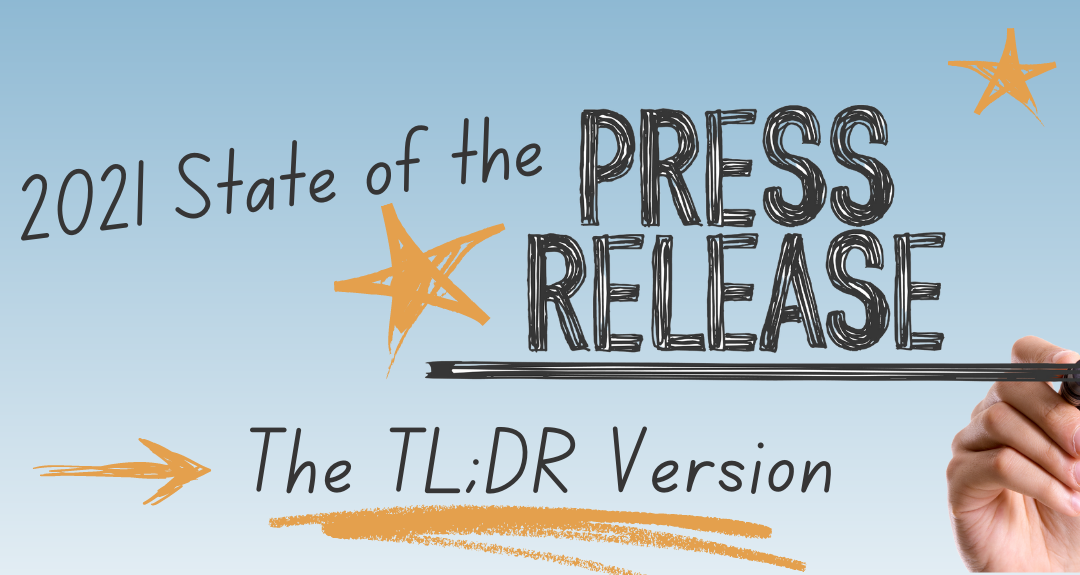
by Brandon Glenn | Apr 30, 2025 | Blog
In today’s content-saturated landscape, thought leadership bylines remains a powerful tool for building credibility and influence. For example, 88% of decision-makers believe high-quality thought leadership content improves their perception of an organization, yet 71% say less than half of what they read actually provides valuable insights, according to statistics cited by The New York Times.
This gap underscores the importance of crafting compelling, meaningful bylines that stand out. To increase your chances of publication and audience engagement, consider these three essential tips.
- Go easy on the self-promotion: The quickest way to lose credibility in a thought leadership piece is to turn it into a sales pitch. While it’s tempting to highlight your company’s solutions, most publications require bylines to be vendor-neutral. Readers seek valuable industry insights, not an extended advertisement. Instead of pushing products or services, share a fresh perspective, unique data, or a forward-thinking analysis of an industry trend. If your content provides genuine value, readers will naturally associate that expertise with your brand, enhancing its reputation without overt self-promotion.
- Focus on an industry problem: Readers engage with content that resonates with their professional challenges. A strong byline should tackle a pressing industry issue and offer actionable insights, not just general observations. Rather than reiterating well-known problems, take a deeper dive: Offer a counterintuitive take, present real-world case studies, or challenge conventional wisdom. For example, instead of writing about how digital transformation is crucial in healthcare, explore why certain digital initiatives fail and what organizations can do differently. Thought leadership isn’t about stating the obvious; it’s about advancing the conversation in a meaningful way.
- Respect your readers’ time: In an era where executives and professionals are inundated with content, brevity is key. Editors and readers prefer bylines that get straight to the point, typically around 800 words. If your article stretches beyond that, tighten your argument by removing fluff and redundant points. Strong, concise writing improves engagement and increases the likelihood of publication. Aim for clarity over complexity, and ensure every paragraph serves a purpose.
Final thoughts
A well-crafted byline can elevate your thought leadership profile, but only if it aligns with industry standards and reader expectations. By prioritizing valuable insights over self-promotion, addressing real industry challenges, and keeping your content concise, you enhance your chances of making a lasting impact. As the data suggests, high-quality thought leadership matters, so take the time to refine your byline and provide content that truly informs and engages your audience.

by Yancey Casey | Nov 13, 2024 | Blog
When these two titans join forces, your brand can’t lose
In the fast-paced world of PR, two heavyweights reign supreme – thought leadership and content marketing. These two strategies are often seen as the Batman and Robin of the marketing world, each with its unique strengths, but unbeatable when working together. If your brand is looking to build awareness, nurture relationships, and drive sales, it’s essential to understand how these two superhero strategies differ and why they should join forces.
The Power of Thought Leadership: Be the Batman of Your Industry
Thought leadership is like Batman – the brooding, strategic hero who relies on intellect and influence. It’s all about positioning your business or executives as the experts in your field. Thought leadership doesn’t push products; it pushes ideas. It starts conversations by offering groundbreaking insights, deep industry knowledge, and forward-thinking solutions to industry-wide challenges.
Think of thought leadership as the superhero who swoops in with a compelling, well-researched article that makes people sit up and say, “I never thought about it that way.” It’s designed to build trust and credibility over time, often appearing in high-profile publications or at industry events. The goal is to create a direct connection with the audience through valuable information, not a sales pitch.
This approach is particularly powerful for companies with complex solutions or those trying to establish themselves as visionary leaders in their market. Like Batman’s utility belt, thought leadership is packed with research, statistics, and innovative ideas that can help a business make an unforgettable first impression.
The Charm of Content Marketing: Robin Leaps into Action
If thought leadership is Batman, content marketing is Robin – the energetic, engaging sidekick who’s quick to jump into action. Content marketing focuses on building relationships with customers through consistent, valuable content like blog posts, social media updates, and newsletters. It’s a top-down communication method, designed to inform and engage the target audience with relevant information that positions the company as the go-to solution for their needs.
While thought leadership is about starting big-picture conversations, content marketing is about nurturing existing relationships. The tone is often less formal and more focused on helping the audience solve specific problems. Whether you’re targeting businesses (B2B) or consumers (B2C), content marketing aims to deliver useful, actionable content that keeps your brand top-of-mind when the time comes for customers to act.
The secret weapon here? Consistency. By regularly producing engaging content, you’re keeping the conversation alive, and that familiarity builds trust. Over time, this tactic turns prospects into customers, and customers into loyal advocates.
The Dynamic Duo: Better Together
While thought leadership and content marketing can each stand alone, they become an unstoppable force when used together. Thought leadership gets you noticed and sparks conversations, while content marketing keeps those conversations going and turns that initial interest into action. It’s like Batman swooping in to save the day, and Robin following up to make sure the job gets done. Let’s break down how these two work together:
- Thought Leadership for Brand Positioning: Thought leadership content, such as expert opinions, research papers, bylined articles, or speeches, positions your brand as a leader in your industry. This content isn’t created to sell directly but to establish authority and trust. It builds credibility with your audience and makes people want to learn more.
- Content Marketing for Engagement: Once you’ve captured attention with thought leadership, content marketing steps in to maintain engagement. This consistent, accessible content keeps your audience informed, addresses their needs, and nurtures them toward a buying decision. Blog posts, case studies, how-to guides, and newsletters all keep the conversation going and provide ongoing value.
- Creating a Funnel: Thought leadership is typically used higher in the sales funnel, where the goal is to create awareness and attract a broad audience. Content marketing, on the other hand, operates lower in the funnel, guiding prospects toward decision-making by offering practical advice and solutions that lead to conversions.
The key is that both strategies ultimately serve the same goal – building relationships and driving sales. Thought leadership opens the door, creating interest and trust, while content marketing nurtures that interest until the audience is ready to commit.
Why You Need Both for PR Success
In today’s competitive market, brands need more than just a one-dimensional approach to marketing. Thought leadership is critical for establishing credibility and making your brand stand out as an industry expert. Meanwhile, content marketing keeps the conversation going, offering consistent value that turns prospects into customers.
When used together, these two marketing superheroes provide a powerful combination that can elevate your brand to new heights. Thought leadership gives you the big-picture, industry-defining ideas, while content marketing keeps your audience engaged on a day-to-day basis. Together, they form the ultimate duo, ready to save the day for your brand’s PR strategy.

by Grace Vinton | May 1, 2024 | Blog
Sometimes you say what everybody is thinking. And when that happens, the reaction can be tangible and immediate.
I was a member of a panel at the recent HIMSS conference and was talking about misinformation. At one point I observed, “Healthcare has a B2B problem, but it’s not business to business; it’s boring to boring.”
All of a sudden everybody started snapping their fingers. I hadn’t seen this reaction before and asked whether people were trying to get my attention. It was confusing! Someone said, “No, you’re on fire.” It seems they agreed with what I said and wanted me to keep going, but didn’t want to interrupt me by clapping. Hence the snapping.
That interesting cultural moment wasn’t about me, but about an awareness clearly shared by most healthcare PR and marketing professionals: Healthcare technology companies and their buyers are mired in boredom. Boring problems. Boring solutions. Boring conversations.
The sad reality is that both healthcare technology companies and their customers – providers, payers, and third parties – are afraid to express a strong opinion or point of view for fear of losing business opportunities.
We’re all sick of boring. Still, I get it: Clients don’t want to confuse or concern a potential customer by saying something audacious or expressing bold thoughts. Healthcare tech companies want to focus their message on what their product does and the problems it can solve for customers. No point in straying from focused thought leadership.
While I understand the strategic impulse toward boring, companies that want to stand out from their competitors need to get more creative with their messaging without confusing buyers or pigeonholing the company as providing a specific solution to a specific problem. Otherwise they may continue to float anonymously in a sea of boring.
Below are some tips for healthcare marketing and PR pros to help their clients and organizations inject some personality and perspective into their messaging.
Connect on a human level
This is healthcare. By definition, it’s about people; serving people and connecting with people. One of the best ways to connect with people is to tell a compelling story. People love hearing stories and are drawn in by a narrative arc that features a journey with highs and lows, challenges and triumphs, and lessons learned.
Great storytellers are relatable and interesting and thus able to connect with an audience. Their stories create a whole world that provides context, rather than running an audience through a tedious list of specific product features and use cases. To sell your product, tell your story.
Go multimedia
Storytelling is about more than the written word. Audio and video are powerful mediums for healthcare technology companies to tell their stories. Not only do some audience members absorb information more efficiently through multimedia, allowing them to see and hear the people behind a healthcare technology company leverages that human connection we all seek.
Even a great infographic or data visualization provides a multimedia tool that can help you articulate a story and emphasize key points. Audience members have diverse learning styles and digital literacy skills; adding a multimedia element to your message will broaden its reach.
Initiate and be part of a conversation
Rather than just relentlessly pumping out marketing collateral, healthcare technology companies should strive to be thought leaders in their sector. Having a voice in an ongoing conversation establishes credibility and puts a human face on the company. Healthcare is a mission-based career, so advocating for your mission and what you believe in resonates with a like-minded audience. People don’t follow companies; they follow other people with great ideas.
Bylined articles published on respected healthcare websites are a great vehicle for demonstrating sector expertise and thought leadership. When potential buyers think you really “get” their challenges, they’ll remember you and your company.
Social media also provides an excellent platform for conversations and idea exchange. LinkedIn probably is the best for healthcare professionals, though many also actively use X. Healthcare technology leaders also can connect with their community through organizations like HIMSS or CHIME.
Finally, some healthcare technology companies have been successful in using podcasts to tell their stories. Some are even launching their own podcasts to provide another venue for interacting with an audience.
Speak the truth (with humor)
The great comedians find humor in everyday life. They also find humor in the truth. If healthcare technology leaders speak the truth to their audiences and find a way to inject humor into the message, they will stand out from the crowd. Humor that is informed by a deep understanding of the industry and the challenges of a particular sector can be memorable. If your humorous truths support your value proposition, all the better.
Conclusion
Healthcare technology companies that hide in the herd and play it safe get ignored. To rise above the boring noise and get your message across, you need to inject your marketing and PR initiatives with a strong storyline framework that employs passion, humanity, humor, and a distinctive voice. Sincerity sells because it’s real and conveys a compelling message: We’re all in this together.

by Jack O'Brien | Dec 22, 2021 | Blog
To be successful in business, you have to come up with a viable idea, develop it, bring it to market, and sell it to customers. That may be an oversimplified version of the formula but the basic principles are there: craft a product or service and then spend most of your time selling it far and wide.
As with so many things in healthcare, this process is more complicated than usual. Caring for patients is always the top priority but then there are also so many different stakeholders and revenue streams that muddle how a company should explore expansion.
Ultimately, healthcare executives are the guiding force that can bring an organization to the next level by embodying the mission statement, promoting value to the market, and winning over skeptics.
But in an era where the playing field is so flat, where new markets emerge only to experience a sudden rush of competitive saturation, companies have to stand out. The most obvious answer to an executive might be to rely on standard business strategies to address these challenges.
However, I would argue that the best way to differentiate yourself as a company and secure necessary industry credibility is to operate above the fray.Optics matter, so leaders must recognize that opportunities to interface with the media and stakeholders as a vendor-neutral voice of reason are an effective, proven way to better serve the business.
Casting yourself as an industry authority or subject matter expert pays dividends down the line because outsiders can look at you and realize you have more to say than simply reciting the same sales pitch over and over.
In the years I spent as a healthcare reporter, some of my most valuable contacts in the industry were accomplished executives that could speak to specific events or general trends in a vendor-neutral way.
Neither me nor my audience needed to know about how their RCM company was the best at streamlining the financial experience for patients or how their virtual care service was going to be the Holy Grail of care access. Quality journalists aren’t there to hand out superlatives or write puff pieces about executives and the companies that they run; rehashing a press release isn’t why reporters do what they do.
However, soliciting the opinions of healthcare’s movers and shakers never goes out of style. For example, if there’s a significant policy announcement affecting payers and I can get an insurance executive on the phone to talk about ramifications without reminding me that they were the first to offer certain benefits to members, then that’s a source I can reliably turn to again down the line.
Subtlety, rather than outright salesmanship, is the best way to position your organization for maximum opportunity.
Getting your name in print, on industry panels, or invited to deliver keynotes should always be the goal because then you build a natural rapport with the audiences you’re most seeking to connect with. Everybody wants what they say to have merit and thought leadership is the ideal exercise to make that happen.
Perhaps most importantly to note, you and your company don’t have to be the star of the story; you just have to be in the story.
Since the initial outbreak of COVID-19, healthcare innovation has enjoyed prime media coverage, the likes of which hadn’t been seen before. Whether it was telehealth, remote patient monitoring, or vaccine research, there were thousands of stories printed about fast-moving developments in an industry that has historically been averse to change.
In each of the stories that ran on television, in print media, or on podcasts, there were ample opportunities for leaders to chime in about the future of healthcare. Many participated, but I implore those who didn’t to reconsider their approach to promoting their brand.
If there’s an outlet or reporter asking to associate your name with a trending story or a noteworthy event, even one that likely will not give you the sole spotlight, you’re better off accepting that invitation because now you’re linked to it.
I know there’s a strong inclination to use any and every media appearance to preach the company’s gospel, but there’s an even stronger value in looking at the world from a 30,000-foot view. If you can step outside yourself and speak to topics that are not simply related to your company’s latest announcement, you will gain invaluable industry credibility and media contacts that will return to you without hesitation.
Thought leadership is not just a pie-in-the-sky buzzword for the most outgoing executives in healthcare, it’s a useful strategy to expand brand awareness that every leader and their communications teams should be pursuing if they haven’t done so already.

by Brandon Glenn | Nov 10, 2021 | Blog
There are a few yearly traditions Americans rally behind and await with eager longing and hushed anticipation – birthdays, holidays and the publishing of Cision’s “State of the Press Release” report.
The 2021 version of this annual 20-something-page paean to the press release – brought to you by the people who profit the most from press releases, it bears keeping in mind – recently arrived on our virtual doorstep. As is the hallowed tradition in these parts, we read the report and summarize it below to save you the anguish, remorse and indignity.
The report is the result of Cision’s examination of more than 100,000 press releases from the prior year, coupled with a survey of PR pros about their press release practices. For those of you who find the full report too long and do not want to read it (TL;DR), here are five key take-aways to consider:
- In terms of volume, the industry has returned to a pre-COVID-19 level of “normal”: Seventy-four percent of respondents said that their press outreach was either on par or more frequent than before COVID or not impacted by the pandemic at all.
- Thought leadership releases represent an opportunity for some companies (and a business development opportunity for Cision): As virtually anyone familiar with the concept of a press release knows, the primary reason (83%) companies distribute them is to share business news. Cision notes that just 47% of companies use press releases to share thought leadership content, such as research, data, tips and best practices. Other leading reasons for issuing press releases include: product launches (40%); diversity, equity and inclusion (25%); and corporate social responsibility (19%).
- For headlines, less is more: Certainly, headlines are critical to a release’s messaging, and Cision recommends keeping them fewer than 70 characters. Email applications and Google’s search engine will cut off any text over that amount, according to Cision.
- Mind your action verbs: The verb “announce” is popular in headlines but doesn’t generate a commensurate amount of page views. “Launch” is also widely used but performs proportionately better with its usage. Also consider “show,” “roll out,” “reveal,” and “allow.”
- Check it twice: Not surprisingly when dealing in the written word, Cision found thousands of errors in “final” releases sent by clients. The most common types of errors include: hyperlink errors, misspellings, incorrect dateline dates, grammar mistakes and day/date discrepancies.
What will 2022 hold in store for the state of the press release? The sheer possibilities almost exceed the human capacity for thought (or at least mine) but be sure to return here next year to learn all about it. Until then, our nation turns its lonely eyes to you, Cision.




